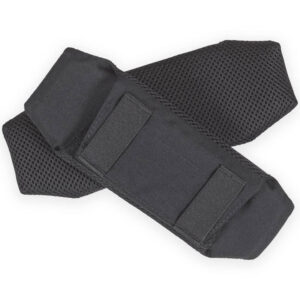Tactical Gear vs. Outdoor Gear: Which One Do You Need?
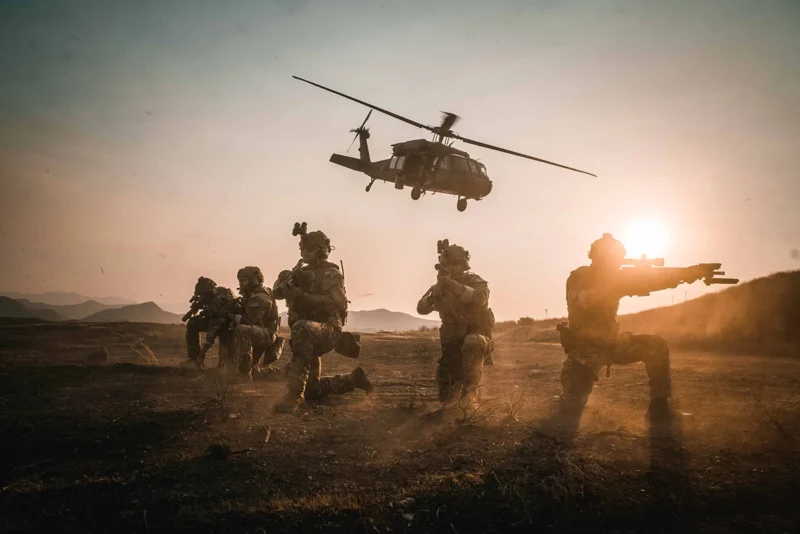
When preparing for your next adventure, mission, or survival situation, your equipment of choice can be the difference between life and death. Whether you’re a seasoned prepper, a first responder, a military professional, or just someone who likes to hike and backpack, choosing the right equipment is important.
Tactical and outdoor gear are two categories that tend to blur, but are used for different purposes. They may look the same at first glance: both provide tough, functional, and weather-resistant products. But scratch beneath the surface, and differences abound.
In today’s guide, we’ll explore the distinguishing features of tactical and outdoor gear, their purposes, and how to determine which one is best for your needs.
What Is Tactical Gear?
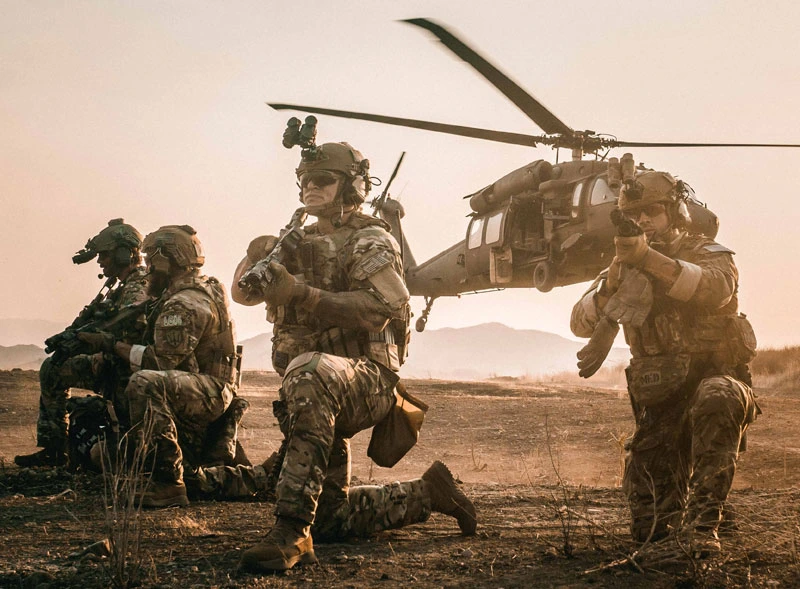
Tactical equipment is designed for combat, law enforcement, and other high-stakes situations. It emphasizes operability under stress, ruggedness, concealment, and modular versatility.
Major Characteristics of Tactical Equipment

Tough Construction: Built to withstand harsh environments and heavy use. Tactical equipment performs in high-pressure situations, from arid desert landscapes to city streets as a battleground.
Function-Driven Design: This features MOLLE webbing, additional pouches, and quick-access pockets. It facilitates rapid reloading, easy customization, and effective carrying of multiple tools and accessories.
Neutral or Camouflage Colors: These colors are designed to blend with the environment or remain undetected. Whether operating in woodland, desert, or urban environments, the color scheme assists in keeping low visibility.
Increased Protection: Frequently incorporates ballistic components, reinforced seams, or fire-resistant materials. Certain tactical pants and vests can have Kevlar panels or flame-resistant materials for protection.
Tactical equipment is a standard issue for the military, SWAT teams, and tactical law enforcement units, but it’s also becoming more popular among survivalists and shooting sports enthusiasts.
What is Outdoor Gear?
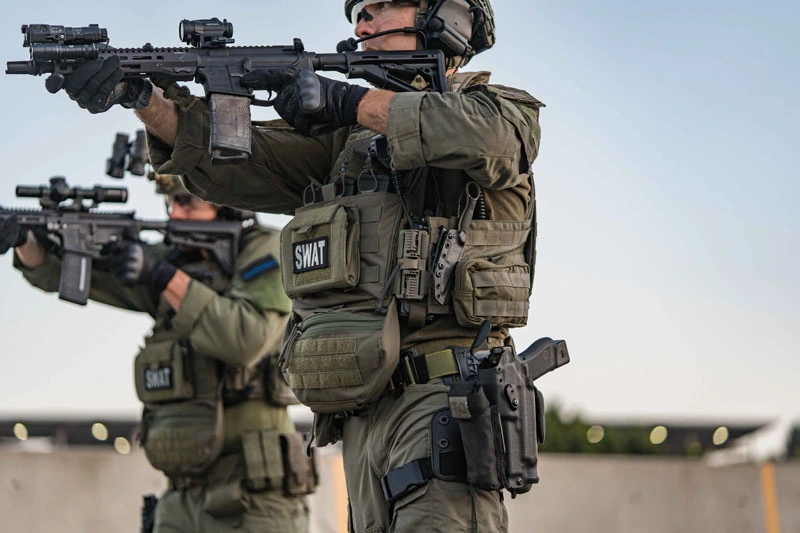
Recreational and expedition outdoor gear is designed for hiking, camping, mountaineering, and backpacking. It focuses on comfort, lightweight, and versatility against varying weather conditions.
Outdoor Gear Key Features
Lightweight Material: They are designed to go the distance and are economical. They are typically made from nylon, polyester, and breathable materials. This reduces wear and tear on long hikes and simplifies packing.
Weather Resistance: Waterproofing, insulation, and moisture-wicking properties are all included. These ensure outdoor enthusiasts stay dry and warm during rain, snow, or sudden changes in the weather.
Comfort-Focused Design: This design favors ergonomics and easy access to tools. The standard includes ventilated back panels, padded shoulder straps, and convenient pocket locations.
High Visibility Options: Apparel tends to be highly visible for safety and trail visibility. Fluorescent vests or highly visible tents assist others in finding you in case of an emergency.
Outdoor gear facilitates prolonged time outdoors without presuming hostile or high-threat environments.
Tactical Gear vs. Outdoor Gear: Feature-by-Feature Comparison
Now that we’ve established each category, let’s compare them by key features:
Durability
Tactical gear triumphs in terms of durability. It’s designed to withstand a beating, abrasion, and endurance in the combat environment. While rugged enough for camping and backpacking, outdoor equipment typically adds some durability to lighten the load. Tactical pants, for example, will utilize triple stitching and ripstop fabric, while hiking pants prefer lightweight materials.
Weight
Outdoor equipment tends to be lighter in weight. With long hikes, every ounce is significant. Tactical equipment is heavier because it utilizes reinforced materials and built-in accessories such as armor compatibility. A tactical backpack will be twice the weight of an ultralight backpack but provides higher protection and loading capacity.
Functionality
Tactical equipment features such as MOLLE systems, quick-release buckles, concealed compartments, and gear attachment points are essential in dynamic or unpredictable conditions. Outdoor equipment emphasizes convenience factors such as hydration compatibility, adjustable straps, and ventilation.
Color and Camouflage
For stealth, tactical equipment generally employs subdued colors—black, coyote brown, olive drab, or camo patterns. Outdoor equipment tends toward high-visibility colors to be more visible and aid in emergencies. Certain outdoor companies even make reflective strips into jackets and packs for night safety.
Weather Protection
Both provide weather protection, but in varying capacities. Outdoor equipment tends to dominate in waterproofing and temperature management. Rain jackets, insulating layers, and breathable outer jackets are prevalent. Tactical equipment, though weather-resistant, may focus on protection from environmental dangers and tactical hazards more so than comfort, even featuring flame or chemical resistance.
Cost
Tactical equipment is typically pricier because it uses specialized materials and construction quality. Tactical footwear, for instance, usually costs more than $150 because it has reinforced bottoms and toe protectors. On the other hand, outdoor equipment has many price levels ranging from amateur to professional quality, making it affordable for hobby users.
Use Cases: When to Use Tactical or Outdoor Equipment
Understanding your primary use case is the key to making the right choice.
Choose Tactical Gear If:
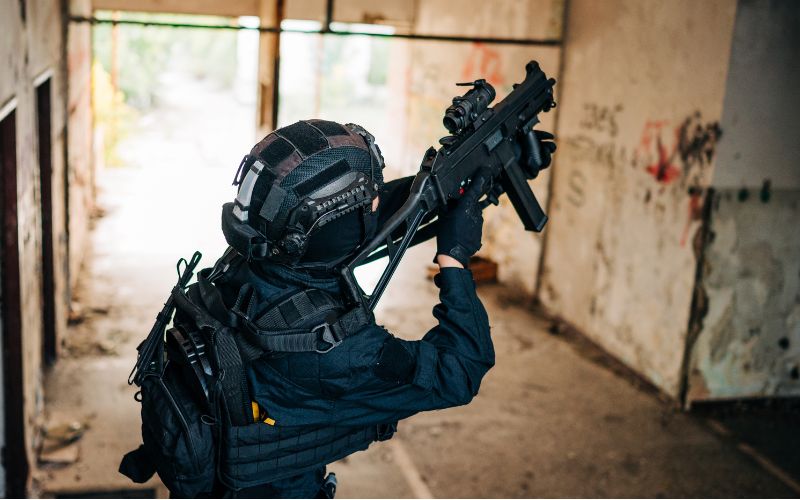
- You work in law enforcement, the military, or private security.
- You need gear that can withstand harsh environments or combat conditions.
- You require modular gear systems (e.g., MOLLE pouches).
- You’re prepping for worst-case survival scenarios.
- You engage in airsoft, tactical training, or tactical gear events that demand specialized equipment.
Choose Outdoor Gear If:
- You enjoy hiking, backpacking, or camping.
- You require lightweight equipment for extended travel.
- You value comfort and breathability over durability.
- You are planning weekend outings, not hostile encounters.
- You engage in multi-day hikes, wildlife photography, or eco-tourism outings.
Can You Mix tactical equipment and outdoor equipment?
Some individuals discover that a combination strategy provides the ideal of both. For instance, a tactical pack with MOLLE attachments may be combined with an ultralight sleeping bag. Similarly, a tactical vest can match outdoor apparel with high-end insulation.
Mixing the two types provides an extremely customized arrangement. For instance, you could use tactical boots for ankle protection and support on uneven terrain, but depend on a hiking jacket that breathes for comfort and heat regulation.
However, it is not advisable to overdo it. Piling too much tactical equipment on for a straightforward hike can be burdensome. Similarly, using only outdoor equipment for a dangerous mission can expose you.
Final Thoughts
Deciding between outdoor and tactical equipment isn’t about which is “better”—it’s about compatibility. Tactical gear excels under stress, with rugged durability and mission-reliant capabilities. Outdoor equipment favors comfort, weight, and durability against the conditions.
Assessing your demands, conditions, and activity level will help you invest in equipment that expands safety and effectiveness.
Frequently Asked Questions
Is tactical gear suitable for hiking?
Tactical gear is suitable for hiking, particularly in harsh terrain or bushcraft-type treks. Nevertheless, it might be heavier and less ventilated than regular hiking equipment.
Can outdoor gear be applied to survival situations?
Quality outdoor equipment, particularly waterproofing, insulation, and rescue equipment, can support survival. Yet, compared to tactical equipment, it can be short on ruggedness or modularity.

